Microsoft Solutions
- Microsoft Dynamics 365 Consulting Service
- MS Dynamics 365 Business Central
- MS Dynamics NAV
- MS Dynamics 365 CRM
- MS Dynamics 365 Sales
- MS Dynamics 365 Customer Insights
- MS Dynamics 365 Customer Service
- MS Dynamics 365 Field Service
- MS Dynamics 365 Project Operation
- MS Dynamics 365 Finance & Operations
- Microsoft Azure
Backend Development
AI Consulting
E-Commerce Apps
Frontend Development
Cloud Solutions
Frontend
Backend
Mobile App
Microsoft
Industry we Served
- Healthcare IT Solutions
- Manufacturing Development
- Retail & E-Commerce Development
- Education & eLearning Solutions
- Live Streaming App Development
- Logistics App Development
- Lifestyle App Development
- Tracking App Development
- Medicine App Development
- On Demand App Development
- Real Estate App Development
- Shopping App Development
- Grocery App Development
- Chat Application Development
- Salon App Development
- Sports App Development
- Finance App Development
- Kids Learning App Development
- Productivity App Development
- Social Media App Development
- Business App Development
- Travel App Development
- Business Directory App
- Baby Tracking App Development
- Desktop App Development
- Product Catalog App Development
- Classified App Development
- Gaming App Development
Exploring Angular Directives: A Comprehensive Overview
- Use Cases
- November 05, 2024
-
Exploring Angular Directives: A Comprehensive Overview
Introduction to Directives
Directives are a powerful feature in Angular that allow you to extend the functionality of HTML. They are markers on a DOM element that tell Angular to attach a specific behavior to that element or transform the DOM in some way.
Types of Directives
Component Directives: These are the most common type of directives in Angular. Components are directives with a template.
Attribute Directives: These change the appearance or behavior of an element, component, or another directive.
Structural Directives: These change the DOM layout by adding or removing elements from the DOM.
Creating Custom Directives
You can create custom directives in Angular to encapsulate and reuse behavior across your application. Custom directives are created using the @Directive decorator.
Using Built-in Directives
Angular provides a set of built-in directives that you can use out of the box. Some of the most commonly used built-in directives include *ngIf, *ngFor, and ngStyle.
Directive Lifecycle Hooks
Directives have their own lifecycle hooks that allow you to tap into key moments in the lifecycle of a directive. Some of the most commonly used lifecycle hooks for directives include ngOnInit, ngOnChanges, and ngOnDestroy.
Best Practices for Using Directives
Use directives to encapsulate and reuse behavior.
Use attribute directives for DOM manipulation and component directives for complex UI components.
Use structural directives to conditionally render elements.
Conclusion
Angular directives are a powerful tool for extending the functionality of HTML and creating reusable components. By understanding the different types of directives and how to use them effectively, you can build more maintainable and scalable Angular applications.